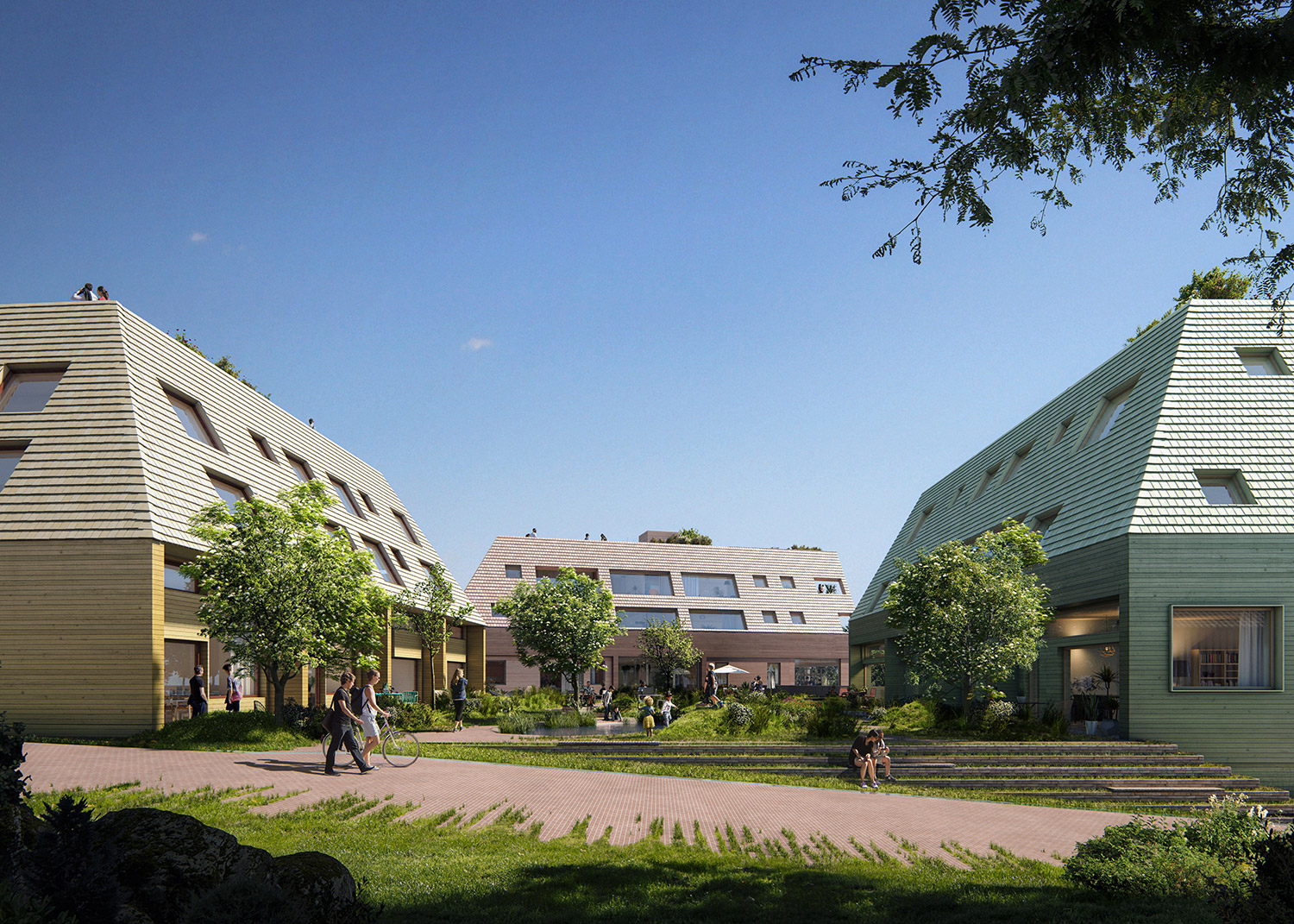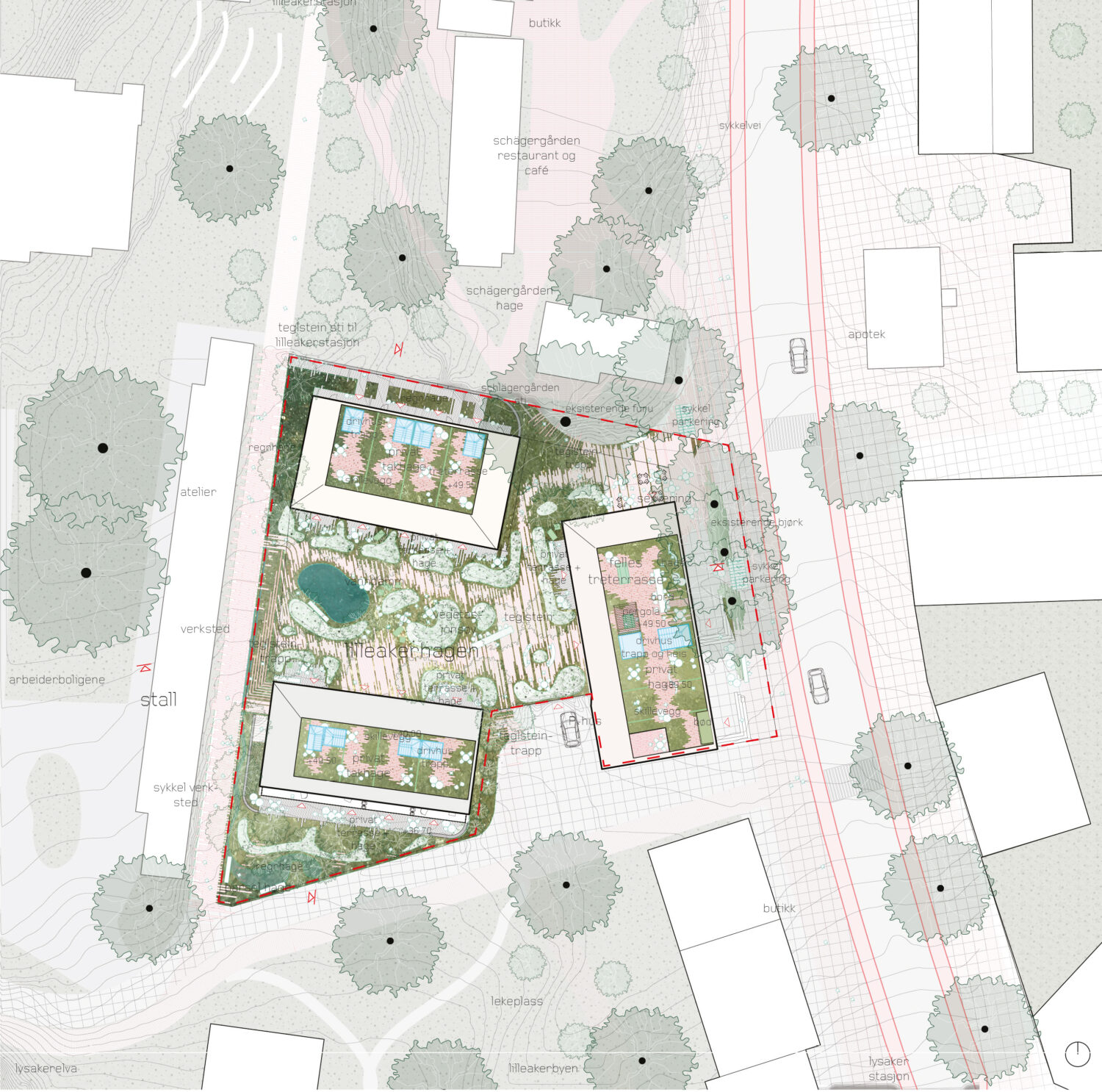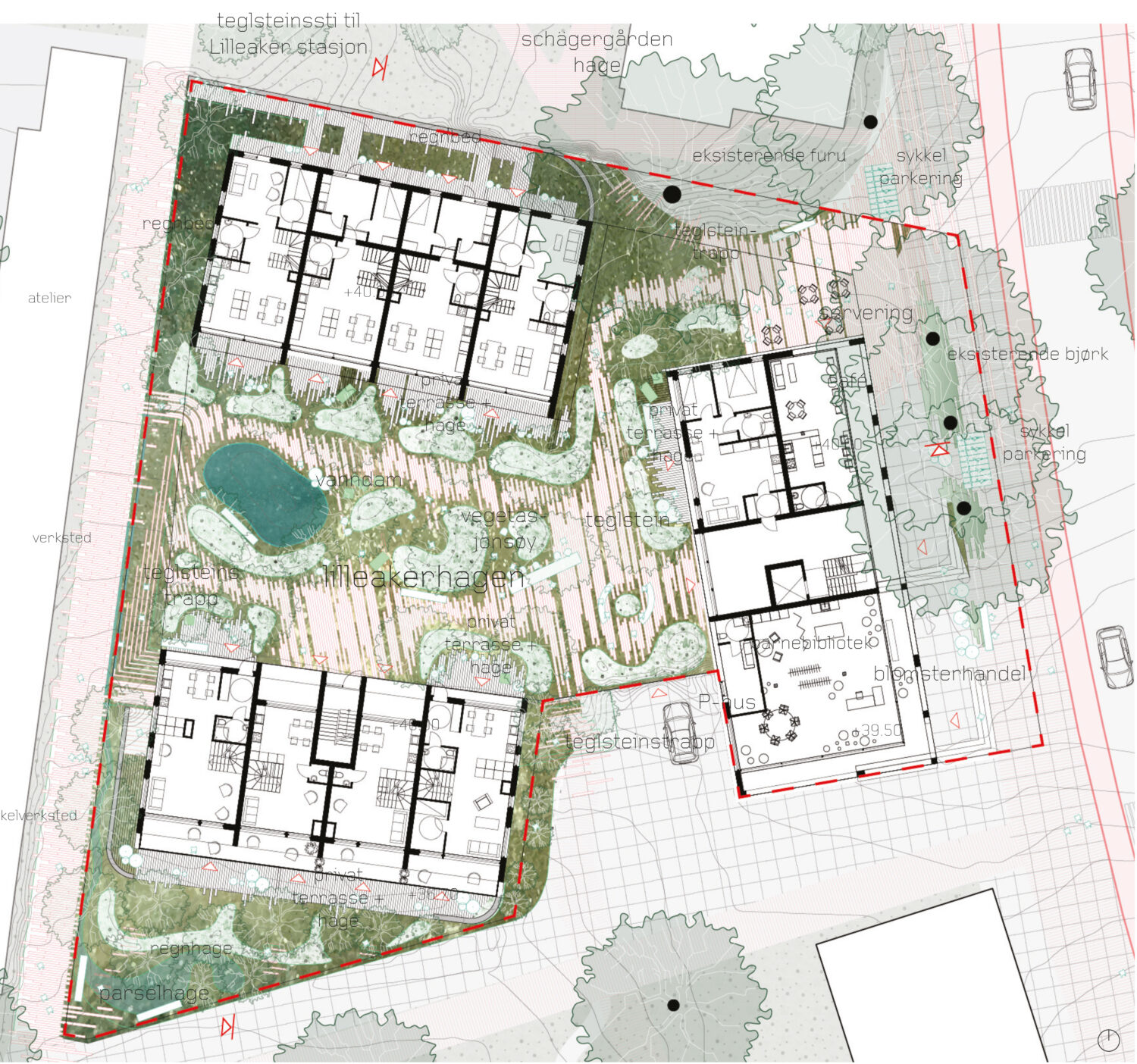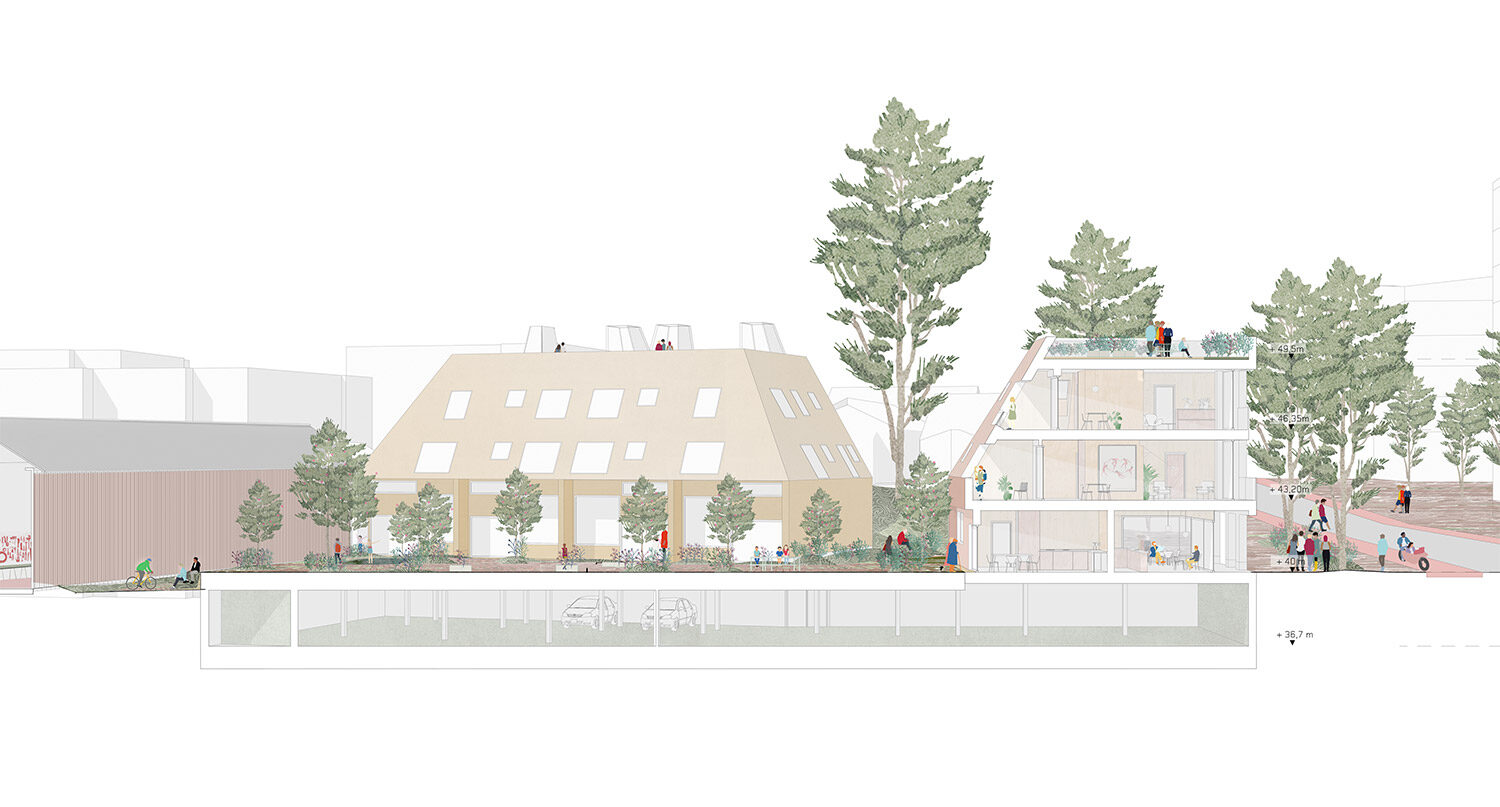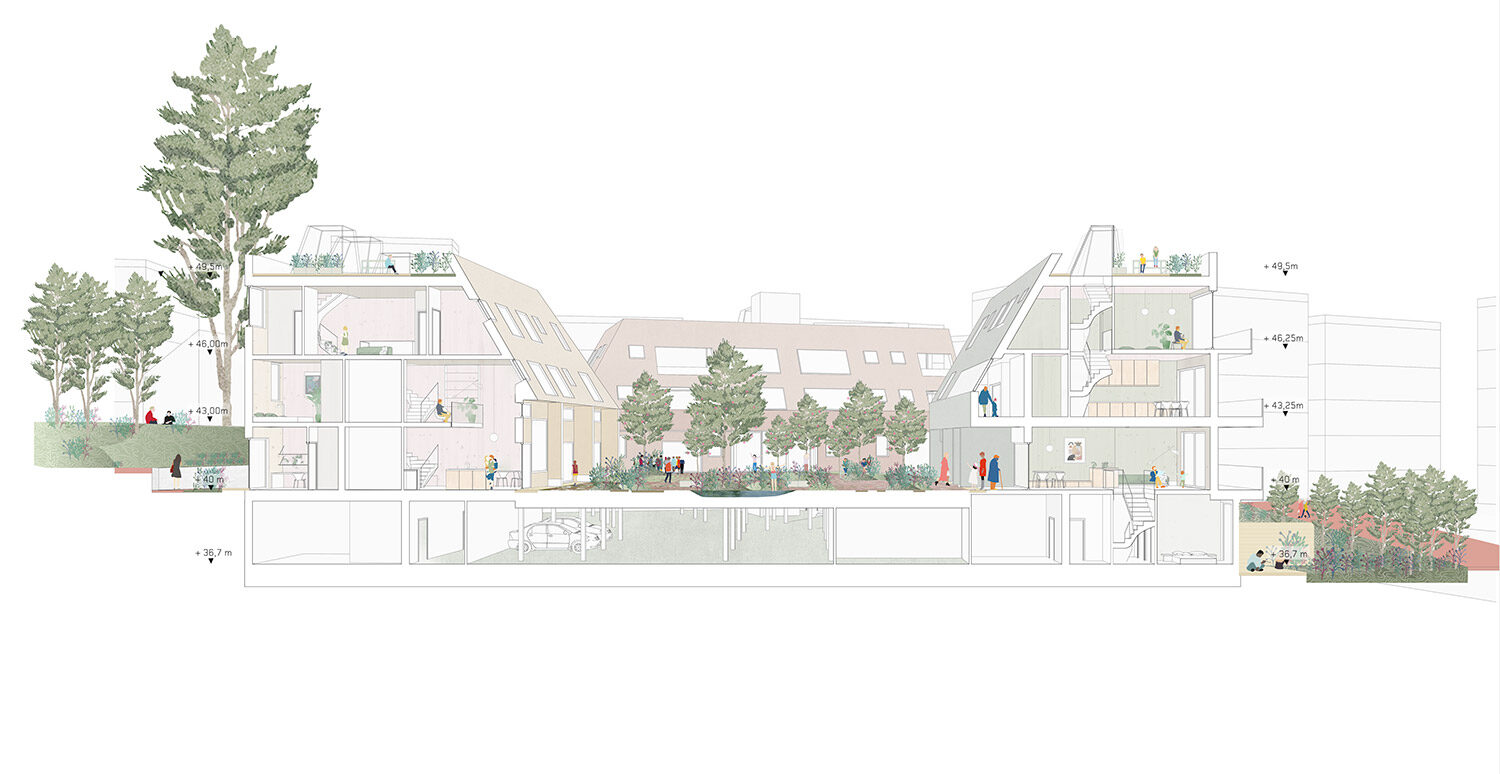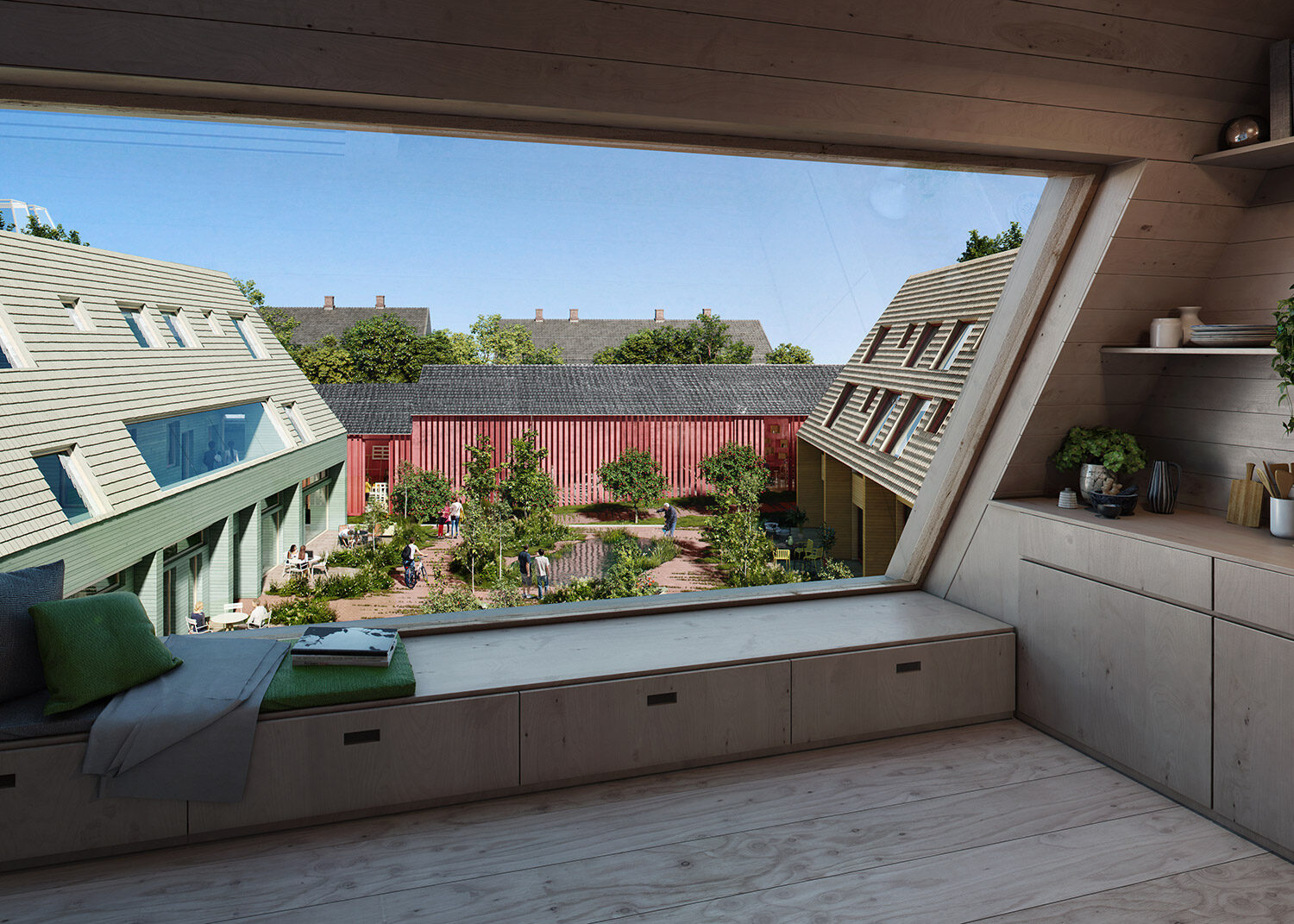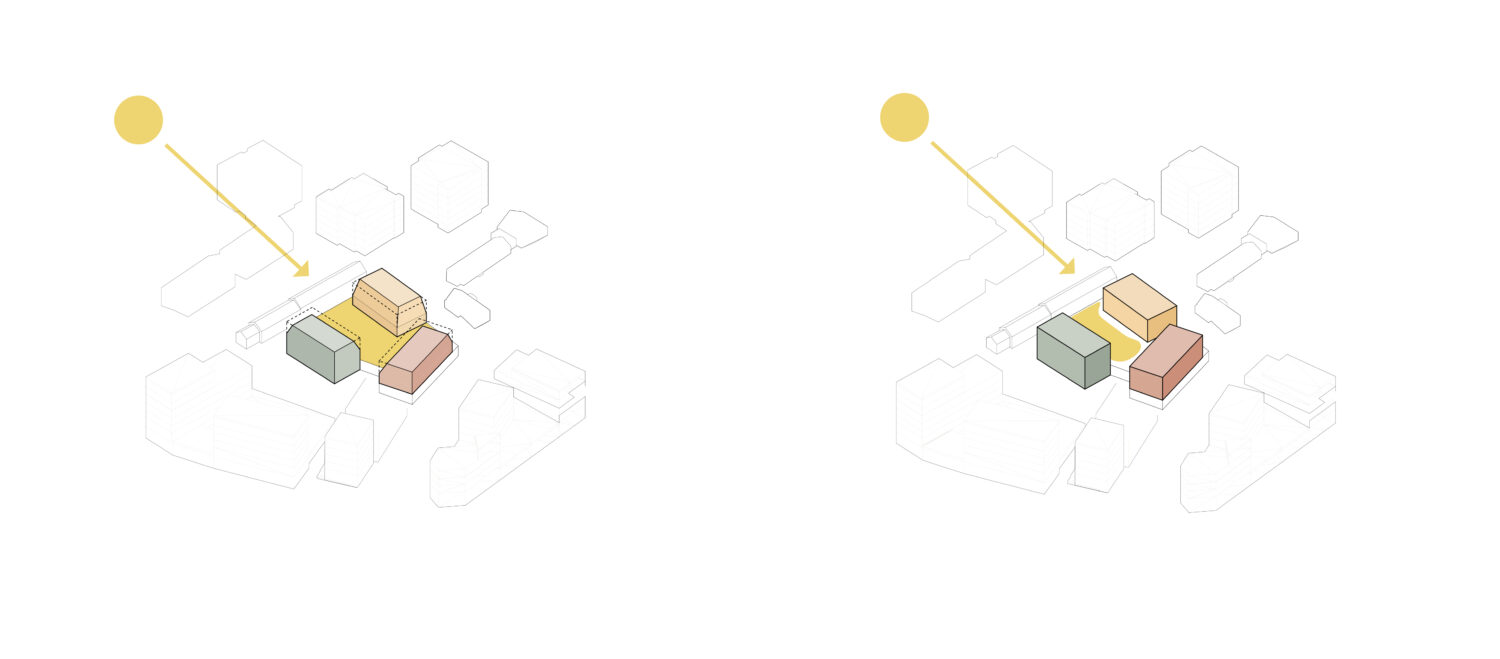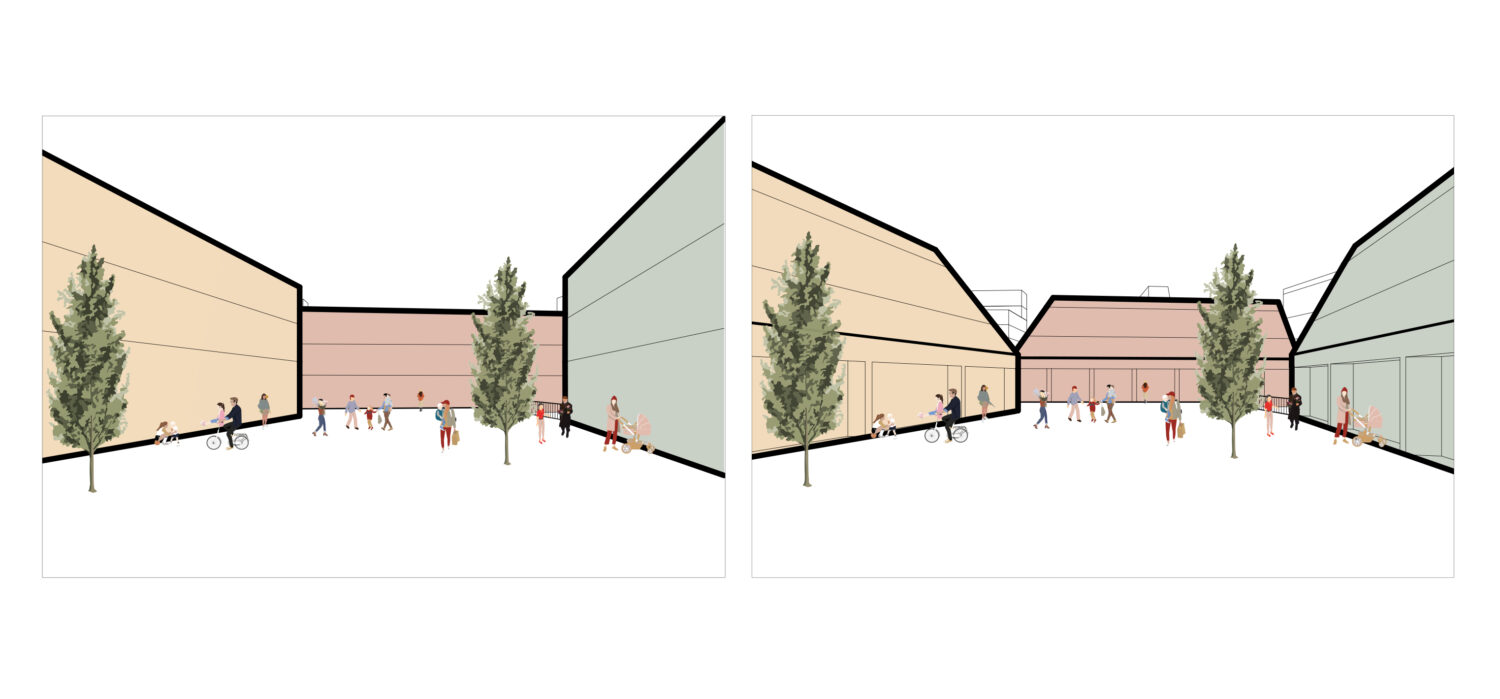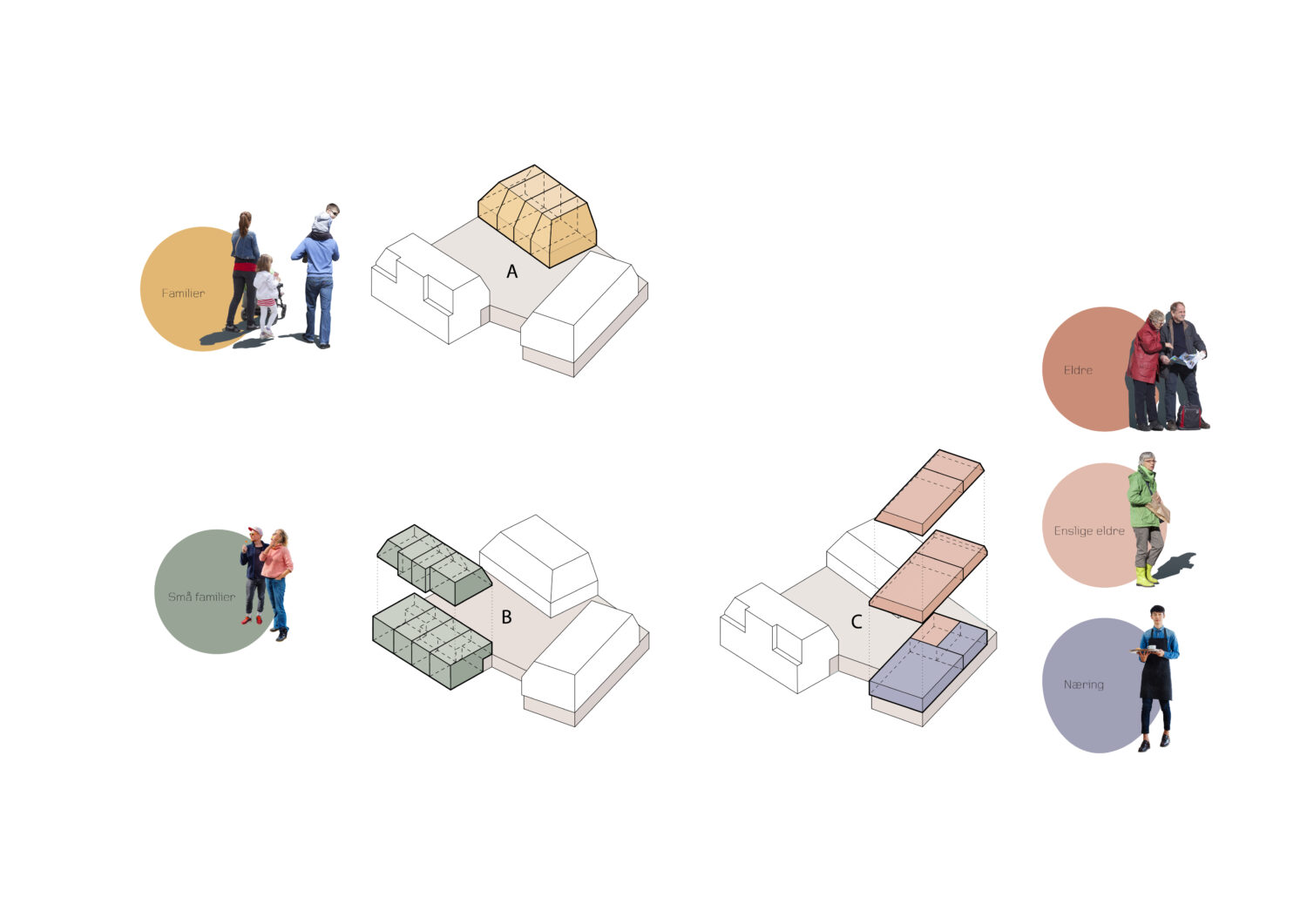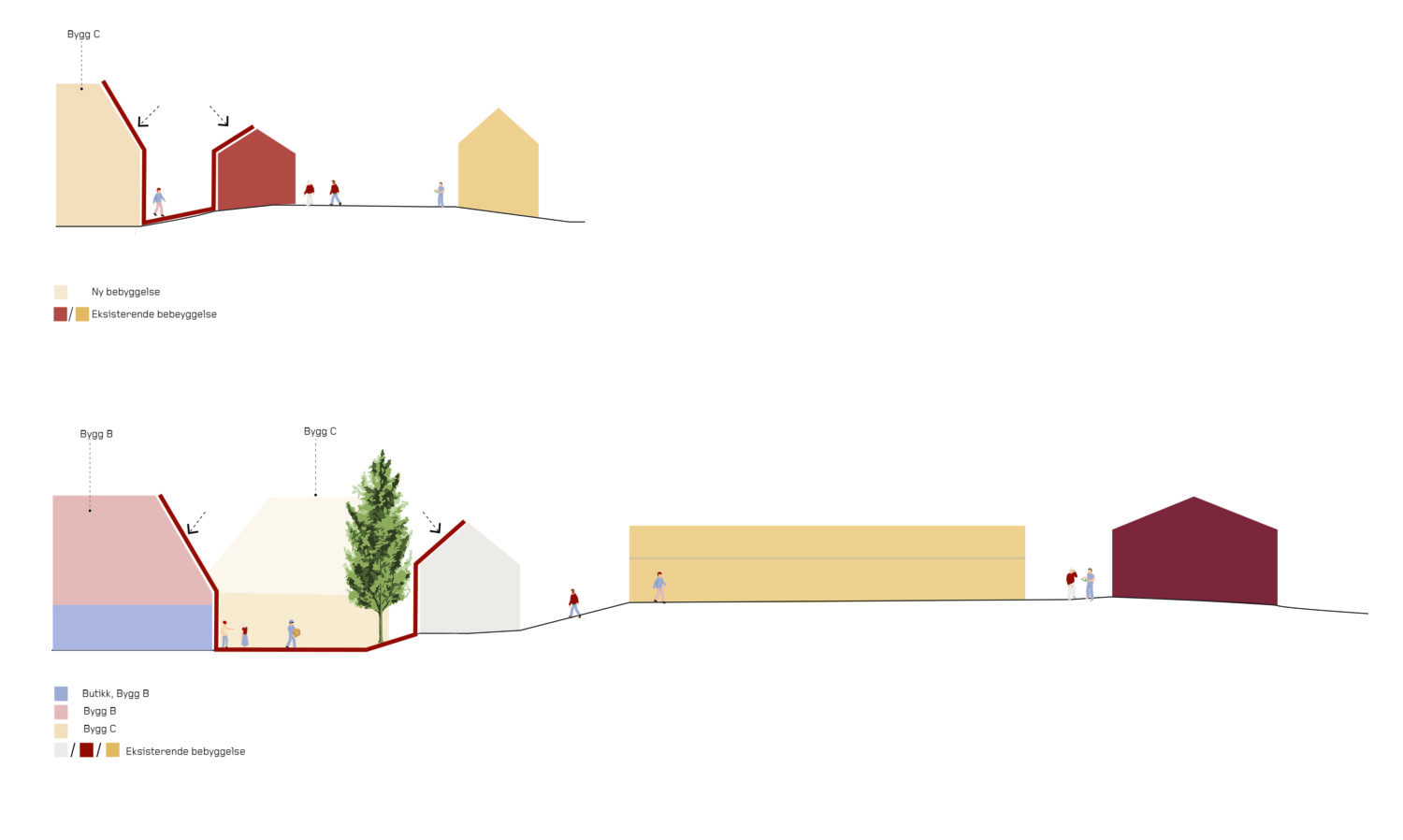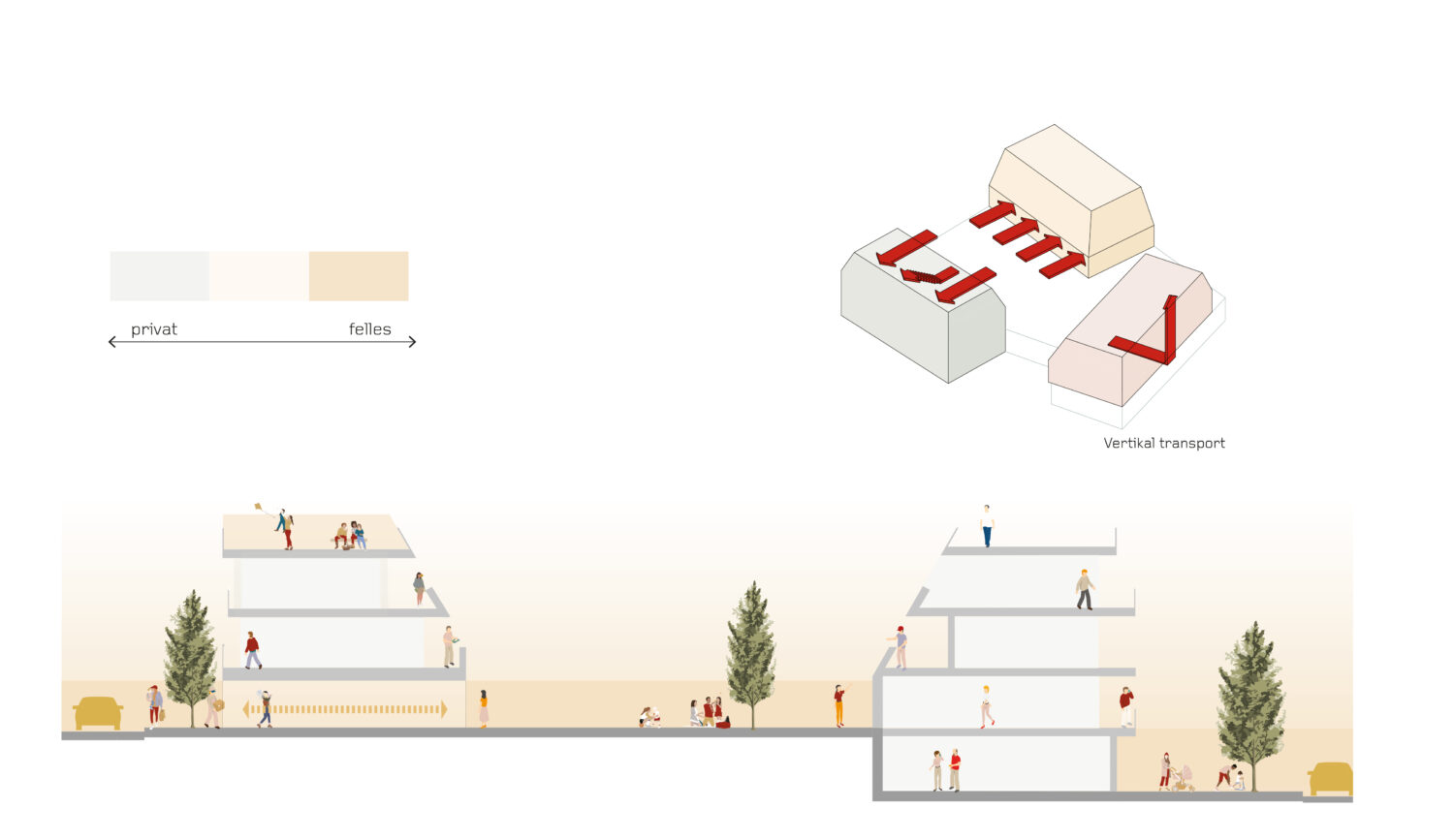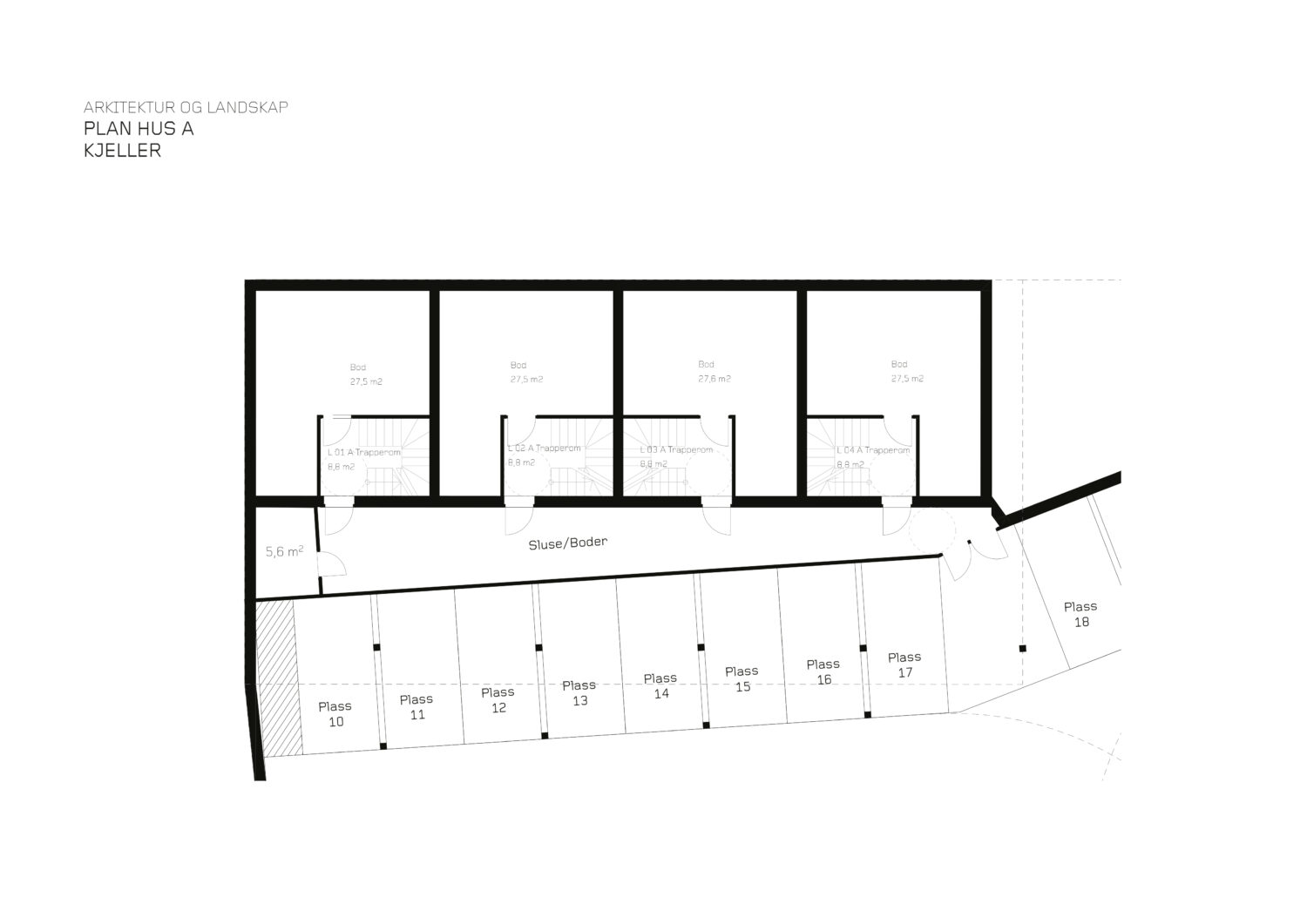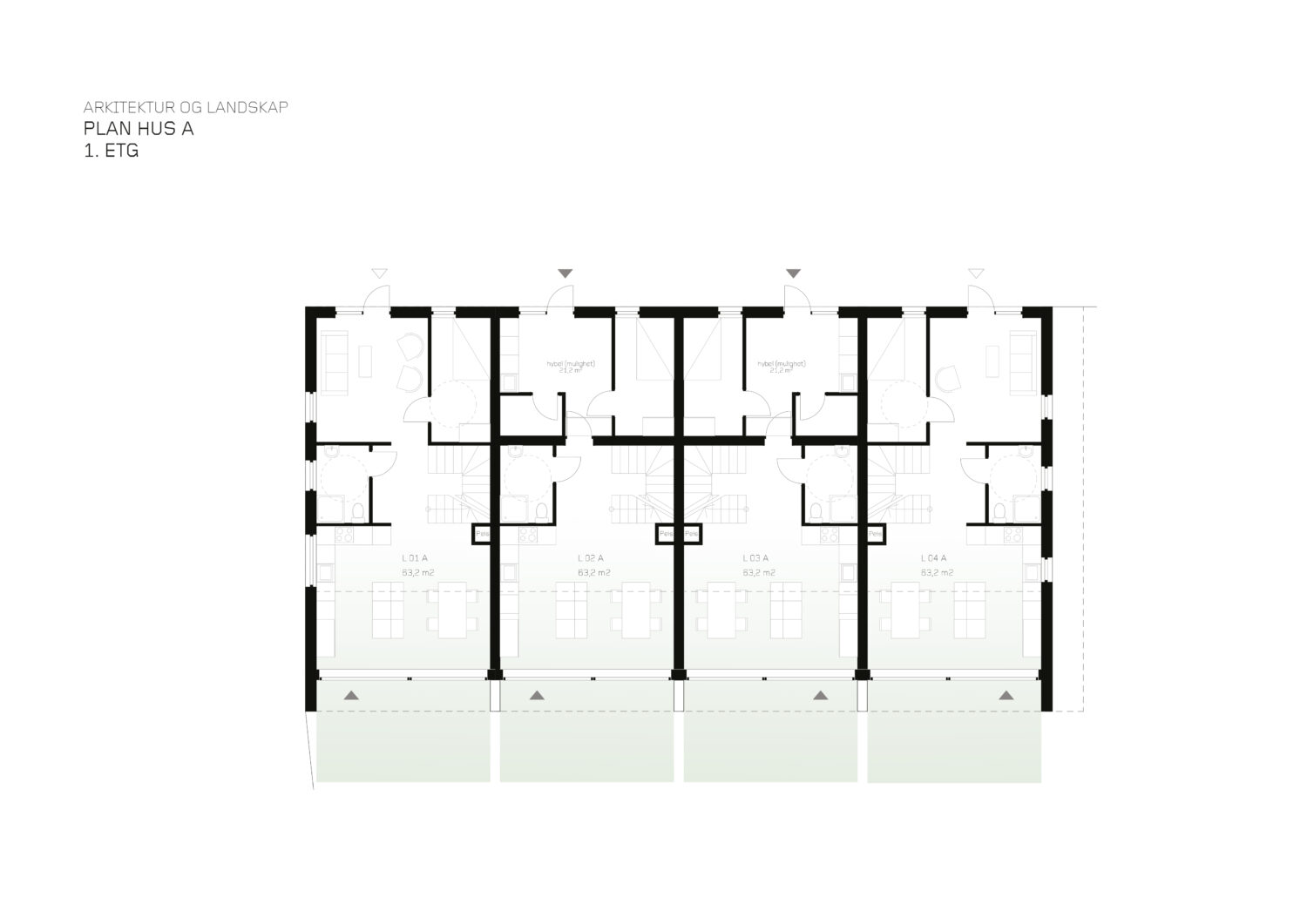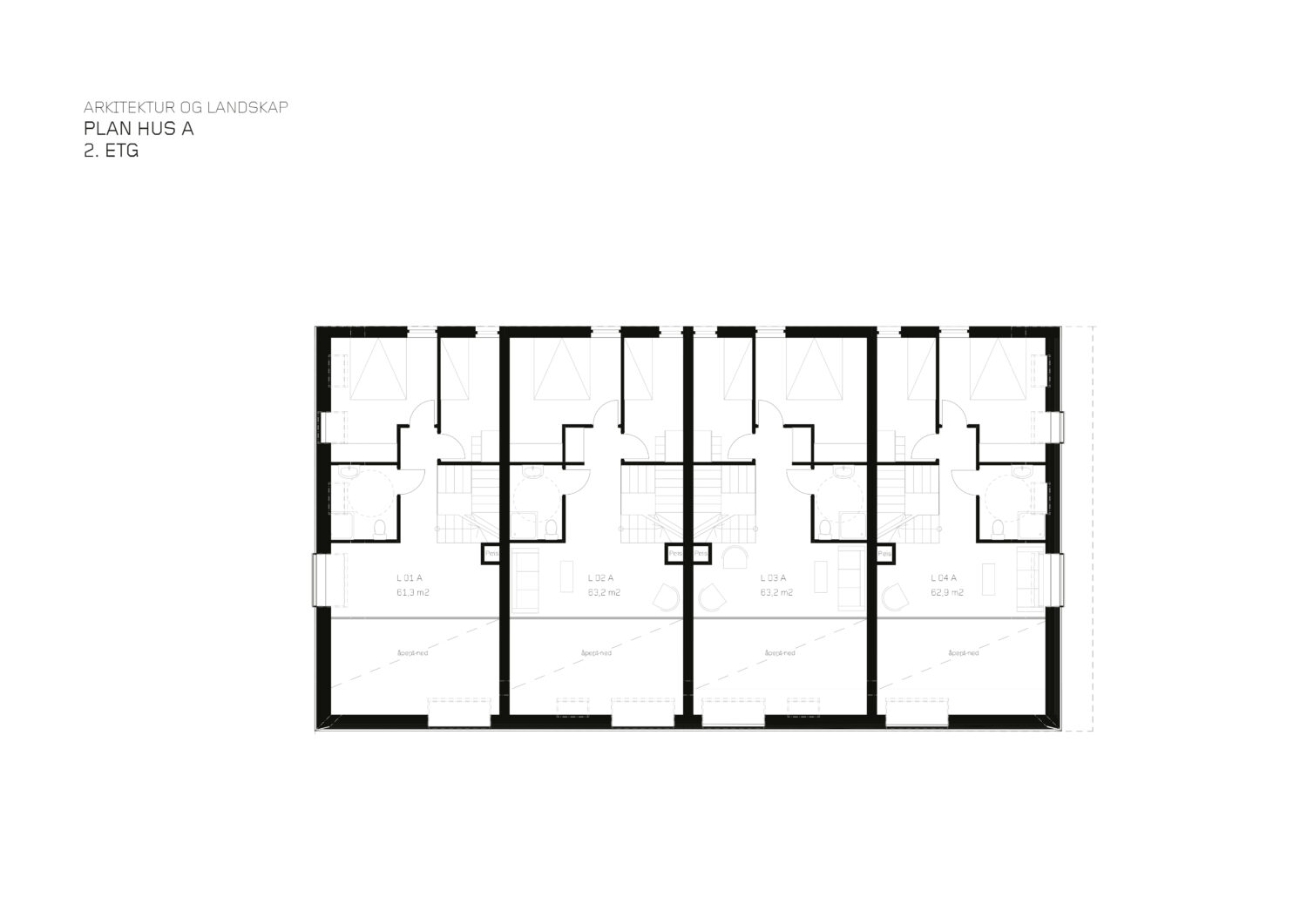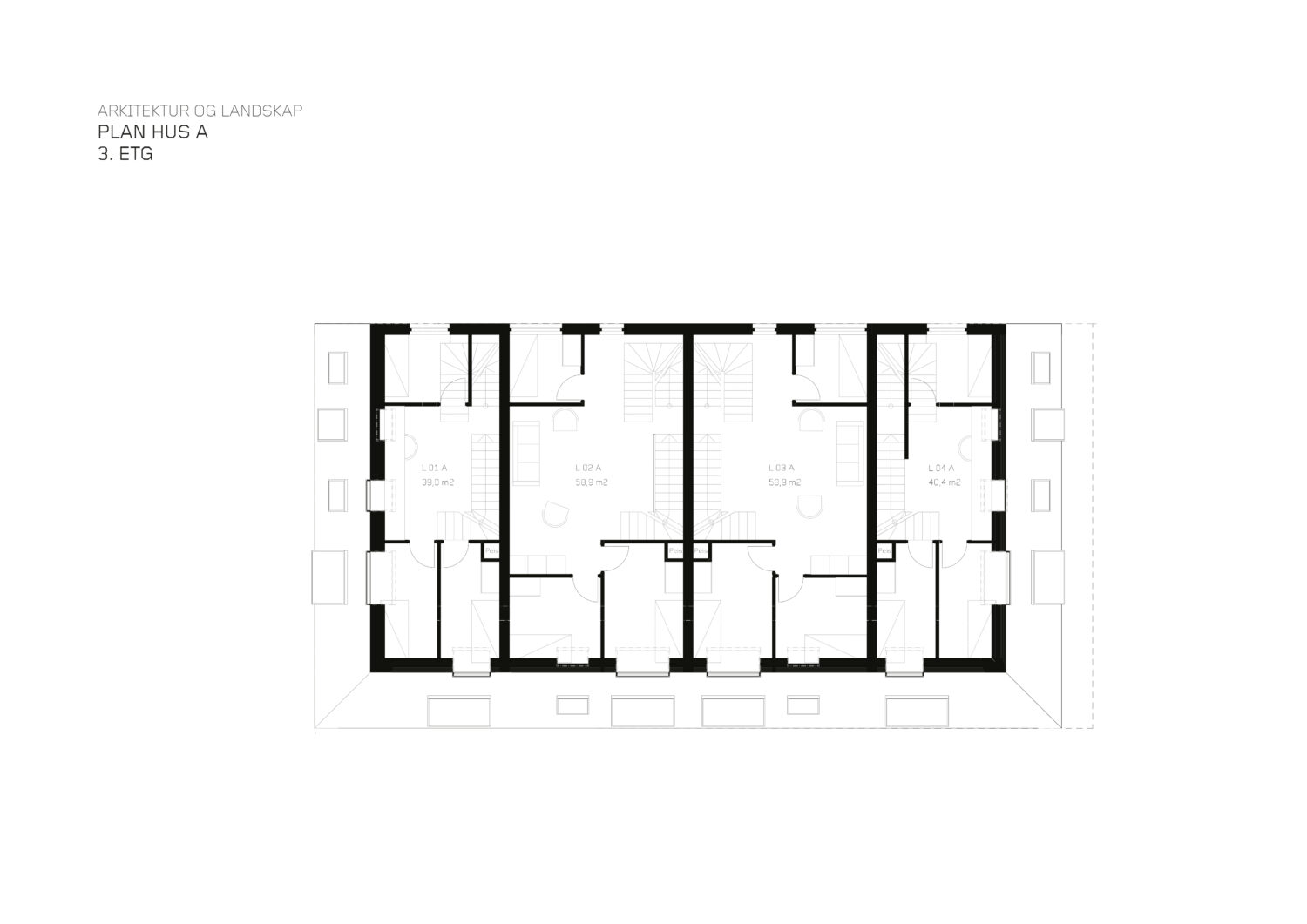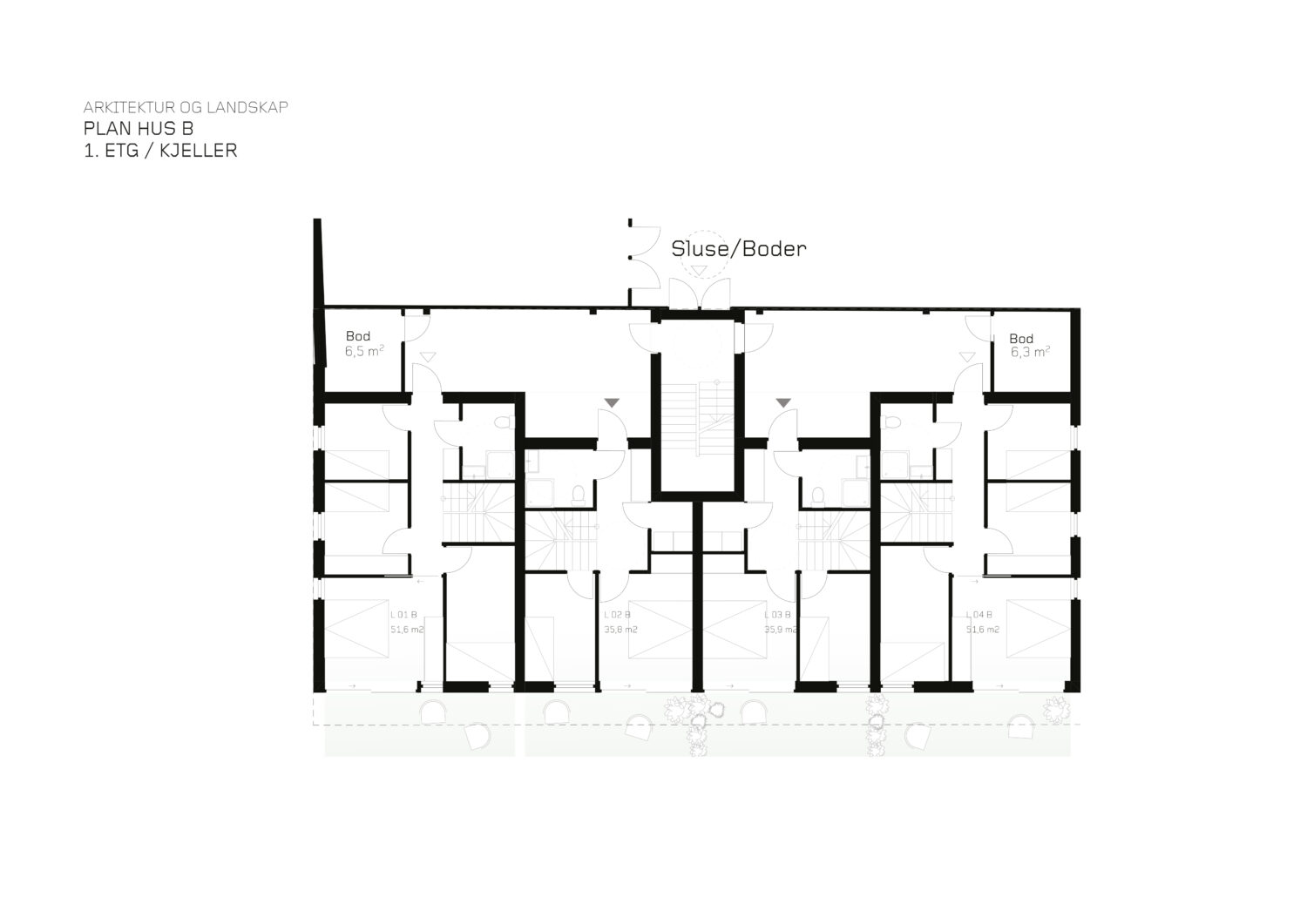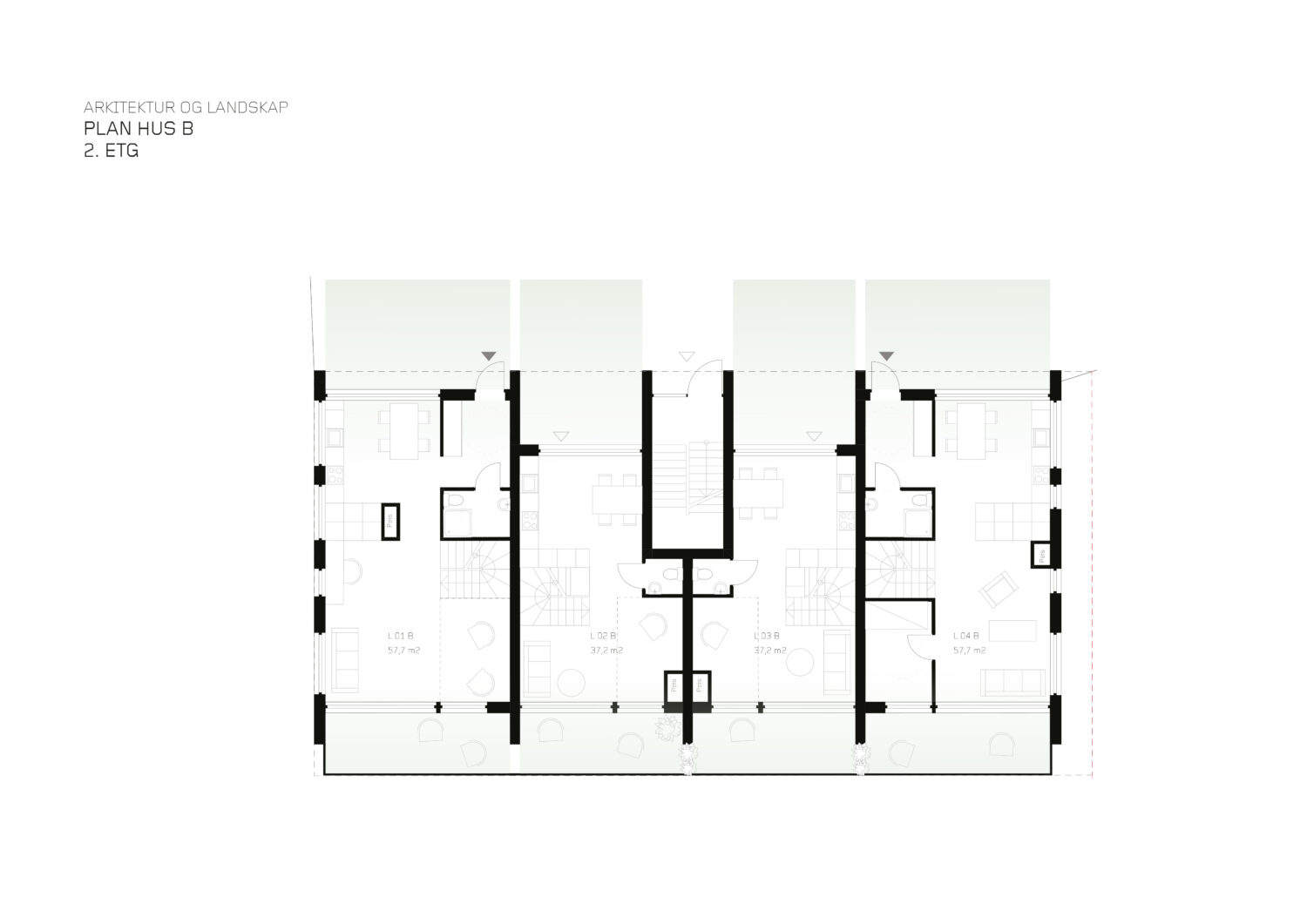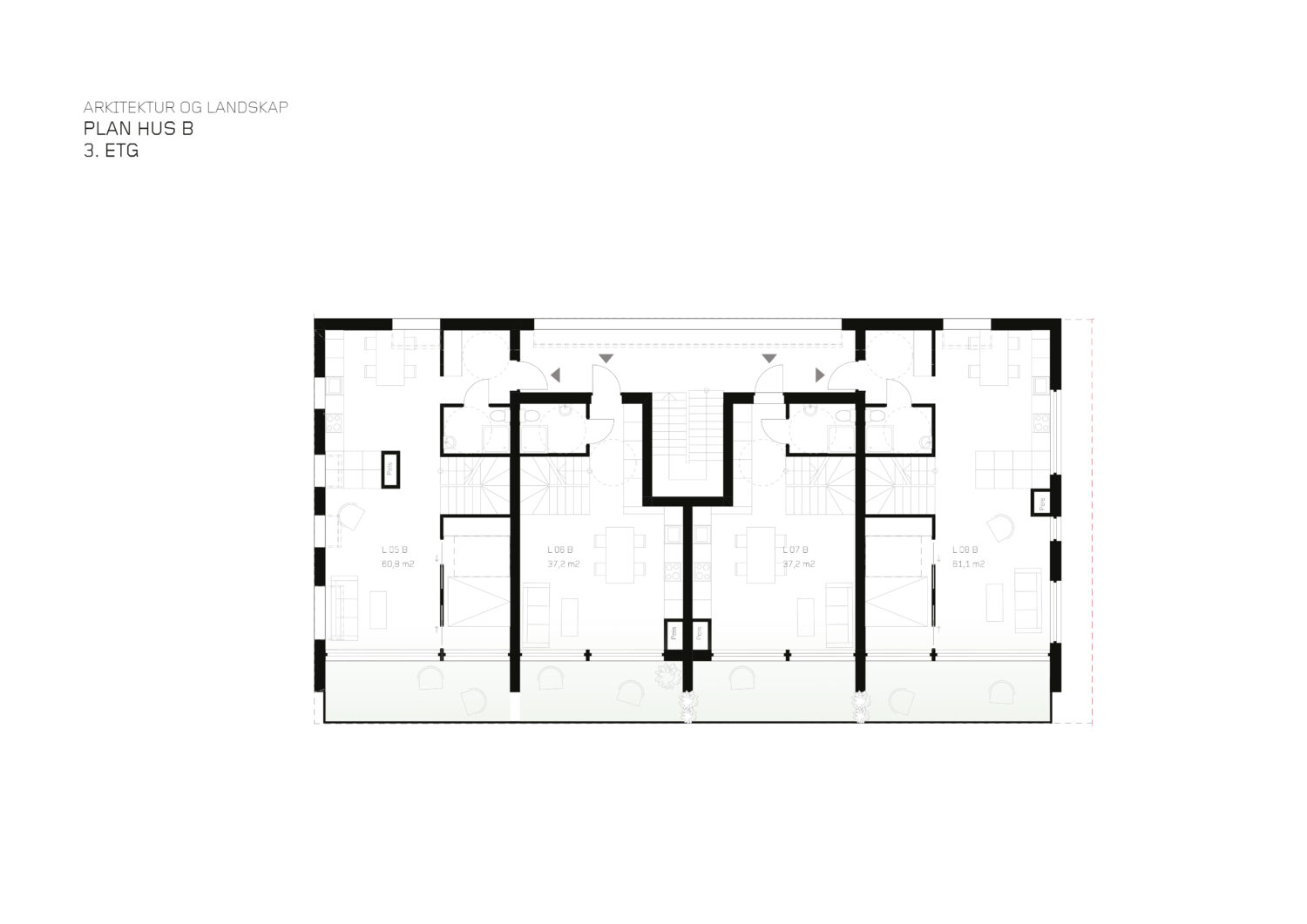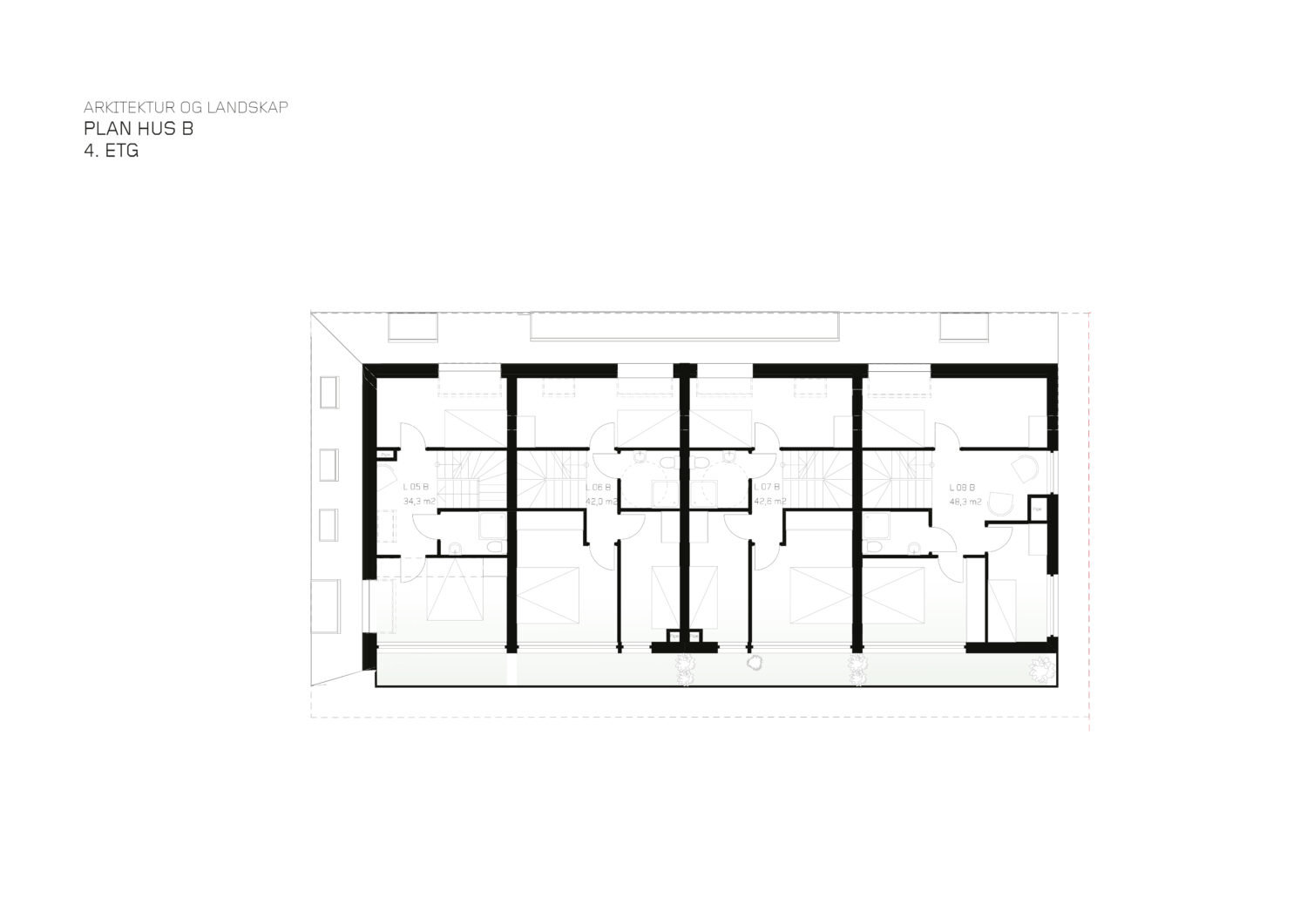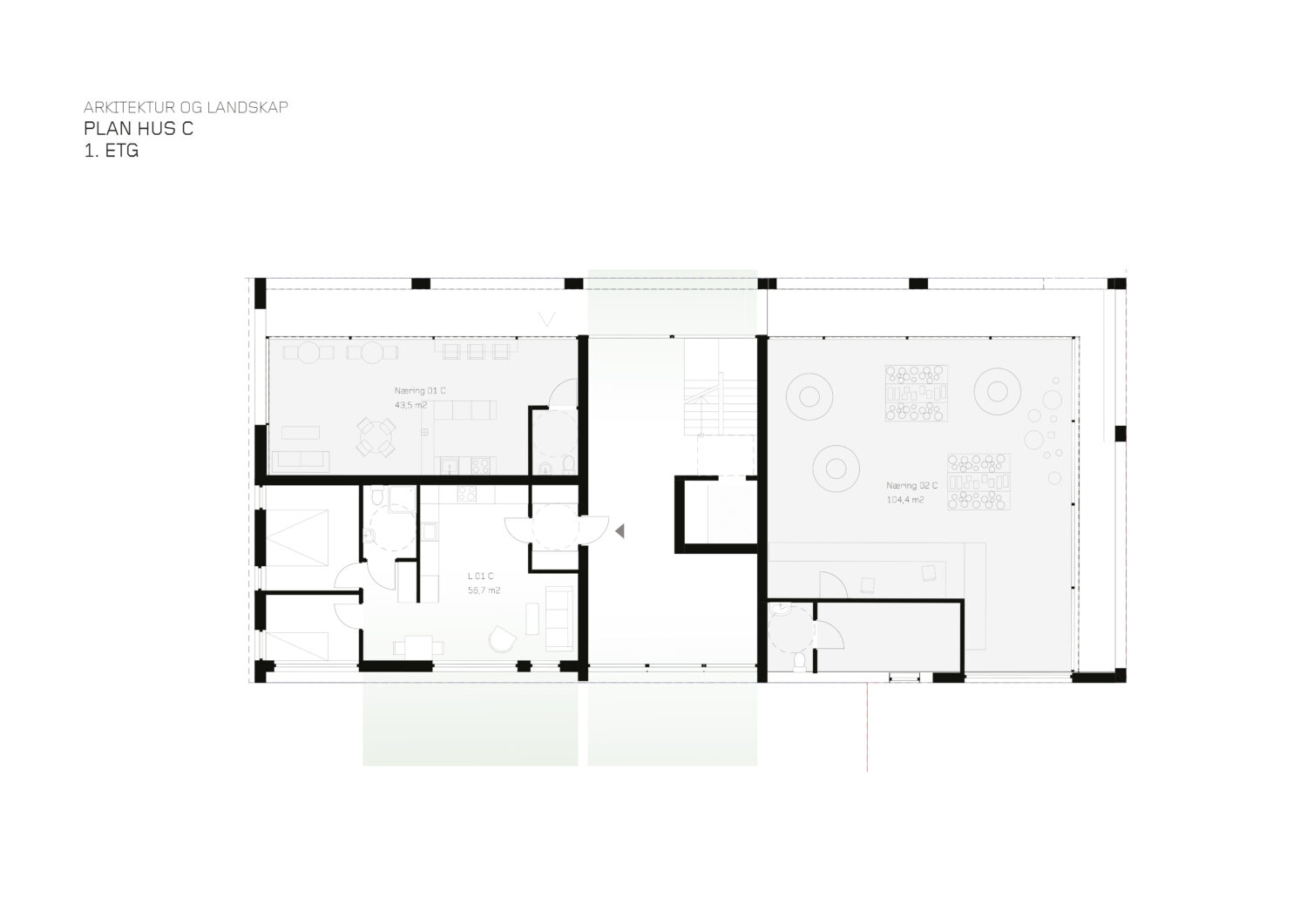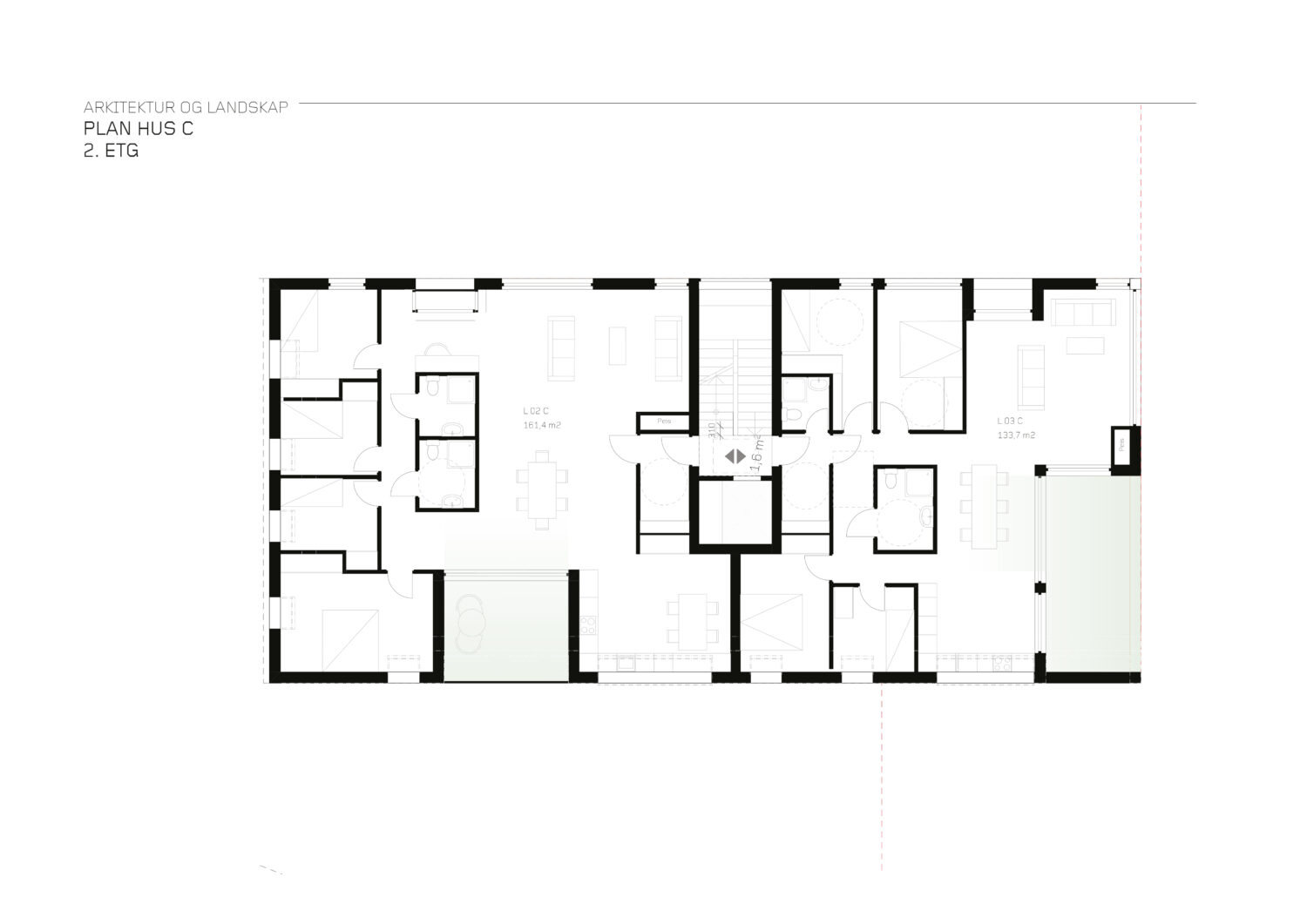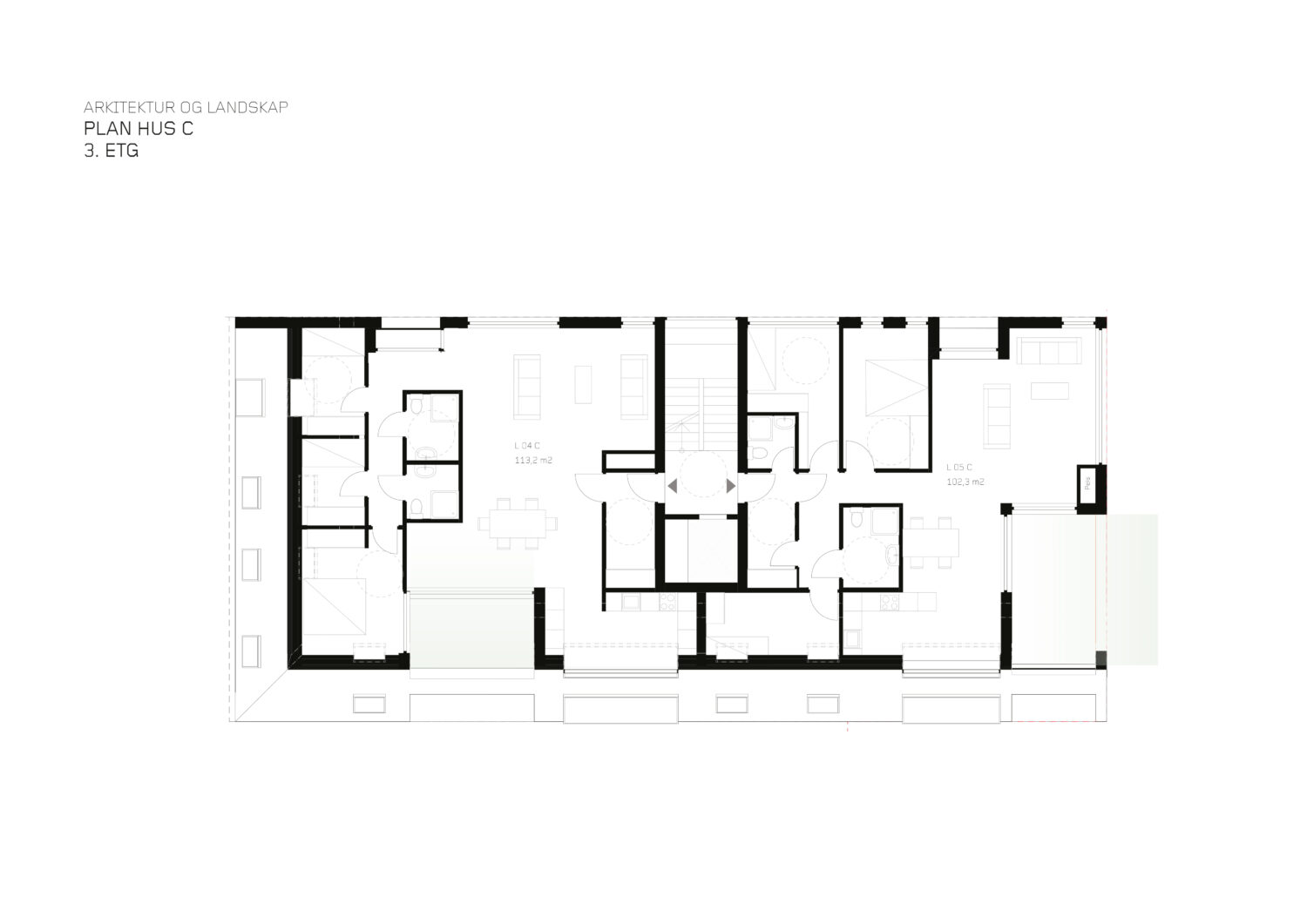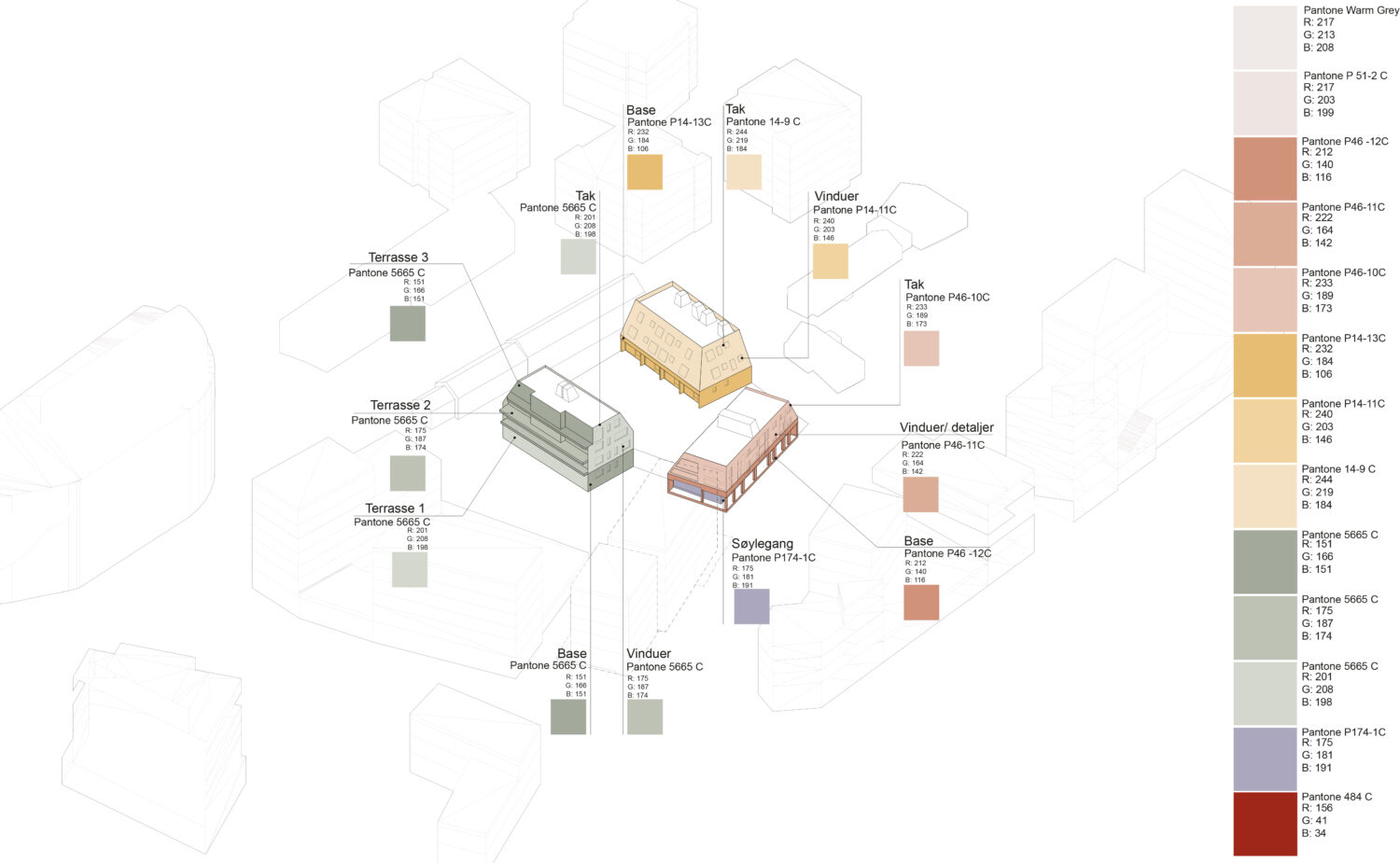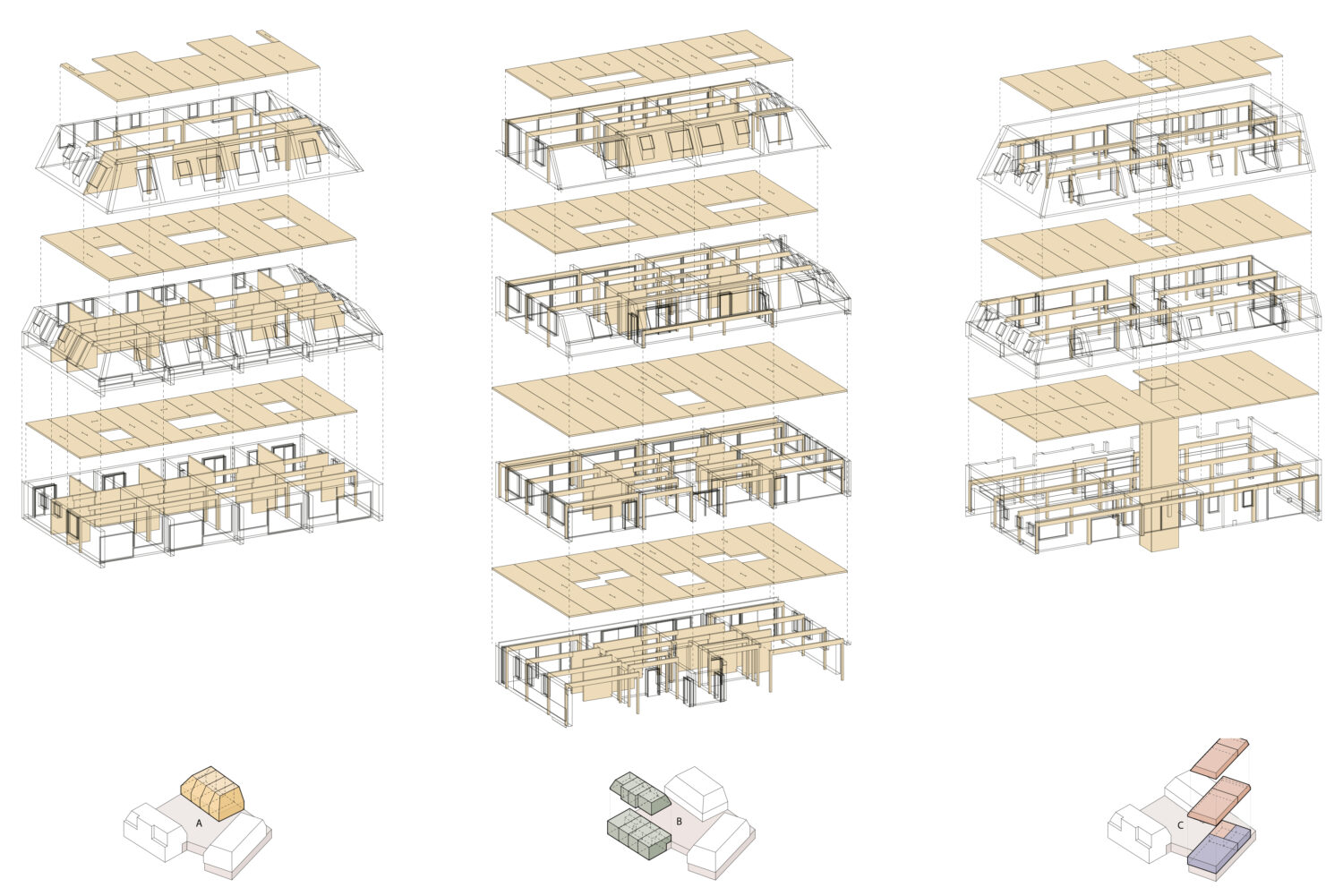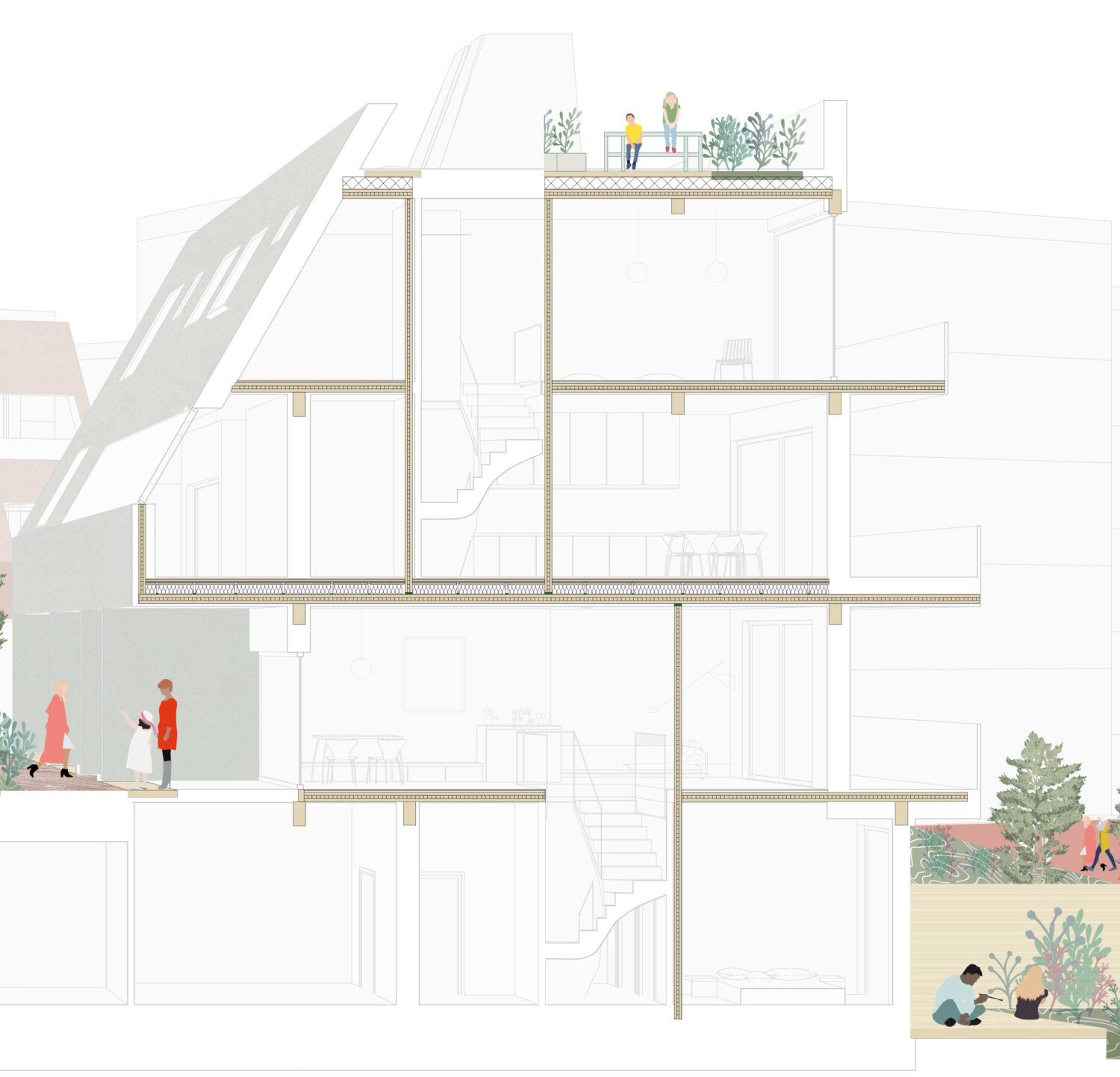Lillehagen is a health-promoting residential project designed to prioritize both people and nature. Located at the heart of the northern part of Lilleakerbyen, it is one of the first developments in Mustad Eiendom’s large-scale urban transformation initiative, Fremtidsbyen Lilleaker (The Future City of Lilleaker).
The project embraces 21st-century challenges by focusing on sustainable construction and landscape regeneration, reintegrating nature into urban spaces. Moving away from modernist principles and outdated building methods, the vision for the future city is a human-scaled, nature-centric environment that functions as part of a larger ecosystem.
Lillehagen is structured around the four classical elements: Earth, Water, Wind, and Fire. The buildings follow bioclimatic principles, using ecological and climatic factors to optimize architecture. At its core, the project proposes sustainable timber construction, with all structures built entirely from wood both inside and out. Insulation is derived from wood industry byproducts, creating a breathable, dynamic climate shell that harmonizes with nature. The exterior features composition paint on the roofs and linseed oil paint on vertical surfaces, reinforcing its commitment to sustainability and environmental integration.
